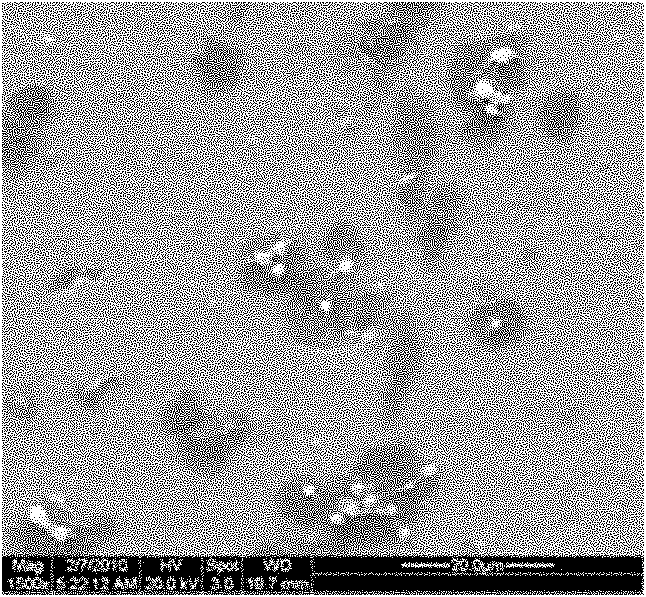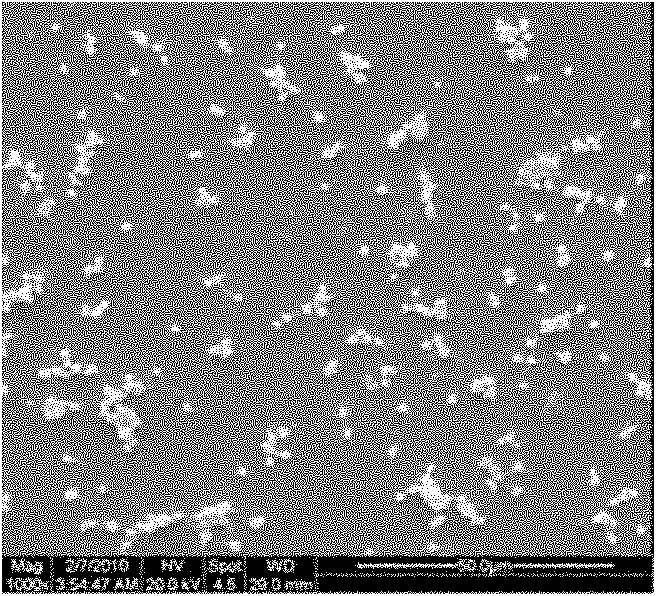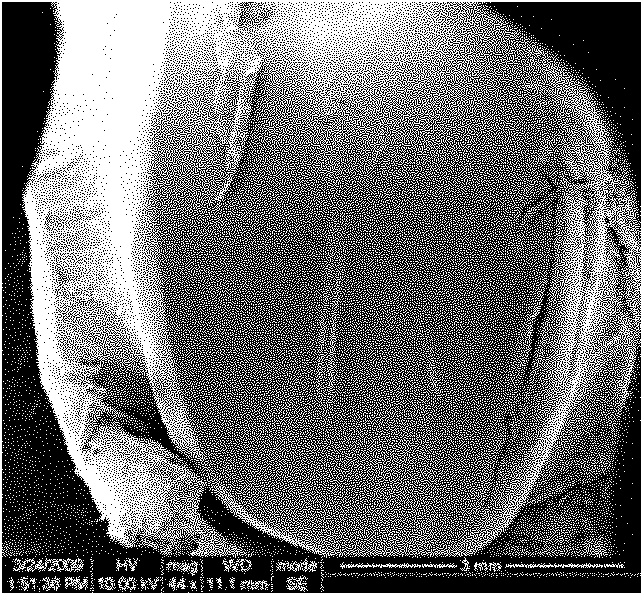Method for grafting 2-methacryloyloxyethyl phosphorylcholine (MPC) polymer on titanium-base material surface
A technology of methacryloyloxyethylphosphorylcholine and surface grafting, which is applied in medical science, prostheses, coatings, etc., can solve problems such as poor binding force, difficulty in achieving anticoagulant effect, and loss, and achieve Improved binding force, excellent anticoagulant performance, and not easy to fall off
- Summary
- Abstract
- Description
- Claims
- Application Information
AI Technical Summary
Problems solved by technology
Method used
Image
Examples
Embodiment 1
[0032] A method for grafting 2-methacryloyloxyethyl phosphorylcholine polymer on the surface of a titanium-based material, the steps of which are:
[0033] The titanium-based material is pretreated first, and the specific method of pretreatment is: the titanium-based material-pure titanium, after polishing, it is cleaned with deionized water, acetone, and ethanol in sequence; then the titanium-based material is placed in a 5.0mol / In a NaOH solution of L, heat at 60°C for 6 hours; then place in deionized water, keep warm at 80°C for 12 hours, take it out; After drying; perform the following operations:
[0034] A, soaking and heating Under the protection of nitrogen, the pure titanium material is soaked in anhydrous tetrahydrofuran solution of 11-hydroxyundecylphosphonic acid (HUPA) at a temperature of 25 ° C and a concentration of 10 mmol / L for 12 hours; The final titanium-based material was heated at 120°C for 10 hours;
[0035] The organic phosphonic acid solution in this...
Embodiment 2
[0047] A method for grafting 2-methacryloyloxyethyl phosphorylcholine polymer on the surface of a titanium-based material, the steps of which are:
[0048] A, soaking and heating the titanium-based material-Ti0 2 The material was soaked in anhydrous tetrahydrofuran solution of 11-hydroxyundecylphosphonic acid (HUPA) at a temperature of 25 °C and a concentration of 10 mmol / L for 12 hours; the soaked titanium-based material was heated at 120 °C for 10 Hour;
[0049] B, repeat step A operation 4 times, obtain the unimolecular self-assembly layer of organic phosphonic acid (11-hydroxyl undecyl phosphonic acid) on the titanium-based material surface;
[0050] C, bromine isobutyrylation on the surface of titanium-based materials The titanium-based materials obtained in step B are put into anhydrous tetrahydrofuran solution with a concentration of 0.5mg / ml bromoisobutyryl bromide under the protection of argon, and then add molar The amount of triethylamine that is 1.2 times that of...
Embodiment 3
[0053] A method for grafting 2-methacryloyloxyethyl phosphorylcholine polymer on the surface of a titanium-based material, the steps of which are:
[0054] The titanium-based material is pretreated first, and the specific method of pretreatment is: the titanium-based material-pure titanium, after polishing, is ultrasonically cleaned with deionized water, acetone, and ethanol in sequence; then heated at 160°C for 10 hours. Then do the following:
[0055] A, immersion and heating Soak the pure titanium material in the anhydrous tetrahydrofuran solution of organic phosphonic acid-11-hydroxyundecylphosphonic acid (HUPA) at a temperature of 25°C and a concentration of 10mmol / L for 12 hours; The titanium-based material was heated at 120°C for 10 hours;
[0056] B, repeat step A operation 4 times, obtain the unimolecular self-assembly layer of organic phosphonic acid (11-hydroxyl undecyl phosphonic acid) on the titanium-based material surface;
[0057] C, bromine isobutyrylation on...
PUM
 Login to View More
Login to View More Abstract
Description
Claims
Application Information
 Login to View More
Login to View More - R&D
- Intellectual Property
- Life Sciences
- Materials
- Tech Scout
- Unparalleled Data Quality
- Higher Quality Content
- 60% Fewer Hallucinations
Browse by: Latest US Patents, China's latest patents, Technical Efficacy Thesaurus, Application Domain, Technology Topic, Popular Technical Reports.
© 2025 PatSnap. All rights reserved.Legal|Privacy policy|Modern Slavery Act Transparency Statement|Sitemap|About US| Contact US: help@patsnap.com



